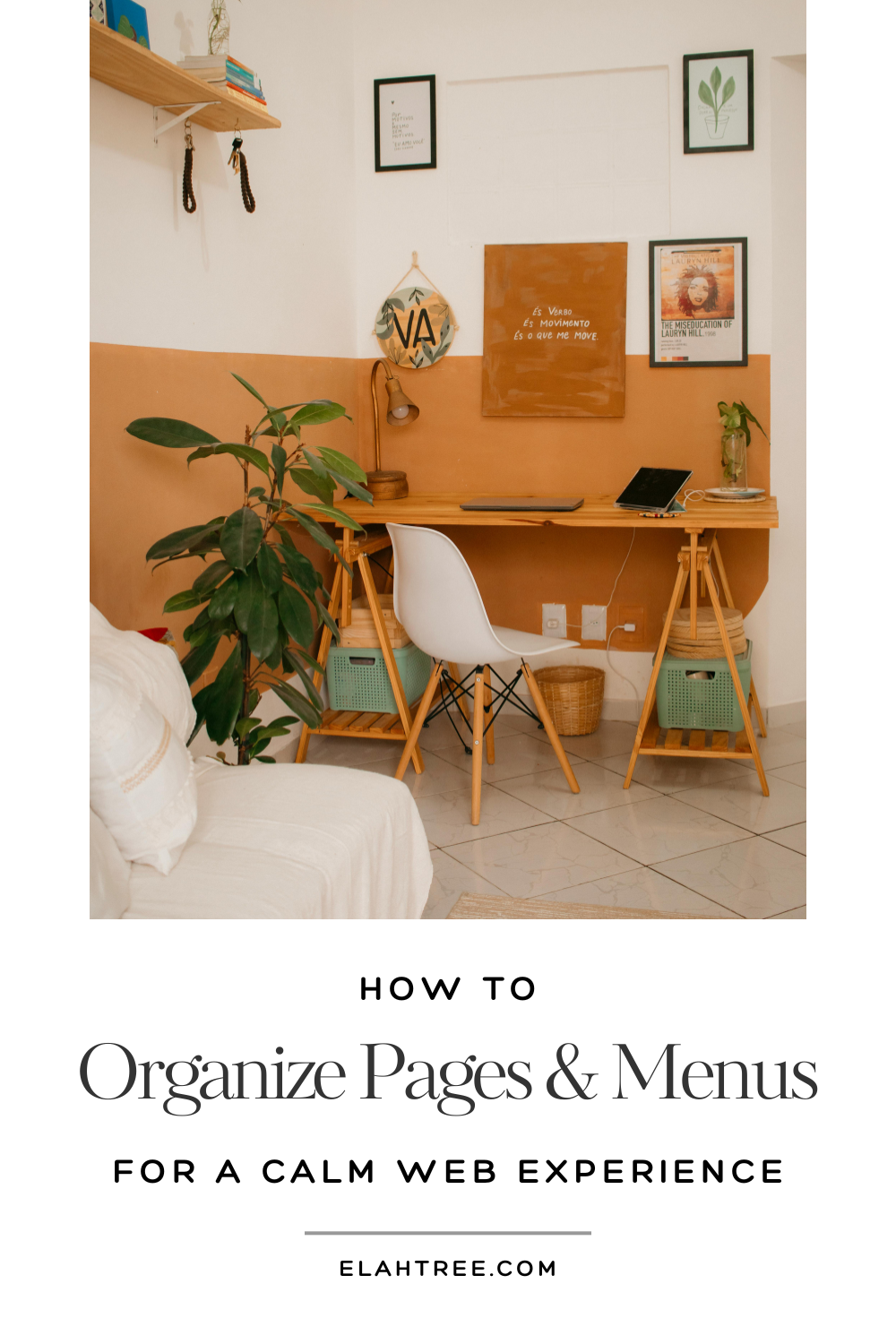How to Organize Pages and Menus for a Calm Experience
Creating a peaceful path through your website.
When someone lands on your website, they’re stepping into a space you’ve created — like opening the door to a home. The structure, flow, and organization of your pages help determine how they feel once they’re inside: overwhelmed and unsure where to go, or guided, supported, and invited to stay.
Many solo entrepreneurs think that the key to clarity is adding more: more pages, more options, more buttons, more explanations. But more isn’t always better. Often, calm is found in less — in intentionally choosing what needs to be there, and letting the rest fall away.
A well-organized website menu is like a gentle hand on the shoulder saying,
You’re in the right place. Here’s where to go next.
So let’s walk through how to organize your pages and navigation in a way that feels peaceful for both you and the people you want to support.
🌿 Start With the Big Picture
Before editing any menu or redesigning any page, pause and ask:
What do I want visitors to understand within the first 10 seconds?
What is the main action I want people to take?
What pages support that journey — and what pages distract from it?
Your website should guide people toward clarity, not decision fatigue.
Think guiding path, not choose-your-own-adventure chaos.
🌙 Keep Your Main Navigation Simple
Less than seven items is ideal.
(Our brains handle smaller groups more calmly.)
A simple structure might look like:
Home
About
Services / Work With Me
Portfolio / Case Studies
Resources / Blog
Contact
If a menu item doesn’t serve your primary goals, it may belong elsewhere (like the footer, a hidden link, or inside another page).
🍃 Group Similar Pages Together
Think in categories instead of individual pieces. For example:
Services might include multiple offerings but appear as one menu item with a dropdown.
Resources might hold free guides, tutorials, or articles without overwhelming the top menu.
About might include story, philosophy, values, or team — but all living in one space.
Clustering makes your website feel spacious instead of scattered.
🌾 Create Clear Next Steps
Every page should gently answer the question:
Now what?
Some examples:
At the end of About → a button to Services or Contact
At the bottom of Services → a CTA to schedule or inquire
In a portfolio → links to related services or testimonials
No dead ends. No leaving people guessing.
When navigation is clear, visitors feel supported — and trust grows.
🌱 Use Consistent Language
If one page is called “Services” in the menu but “Work With Me” on the page, the brain has to work harder.
Consistency creates calm.
Choose the language that feels most aligned with your brand voice and use it everywhere.
☀️ Give Your Footer a Purpose
Your footer can hold:
Legal pages (Privacy, Terms, Accessibility)
Helpful extras (FAQs, Press, Resources)
Social links
Contact info
This keeps your main navigation peaceful and light.
💛 Remember: It’s About Feeling
The websites we return to are the ones that feel good — grounded, welcoming, trustworthy. Page organization isn’t just a strategy decision; it’s a hospitality decision. You’re caring for the nervous system of the person on the other side of the screen.
Calm is created through space.
Clarity is created through intention.
Guidance is created through simplicity.
You don’t need the perfect website structure today.
Just take one step toward more ease.
Your business deserves that care.
You deserve that care.
✨ Coming Up Next
In an upcoming post, we’ll walk through:
How to write gentle, effective menu labels
When it’s time to remove or archive pages
Examples of simple site maps for different types of businesses
If you’d love support organizing or simplifying your website structure, I’d be glad to help. 💛
